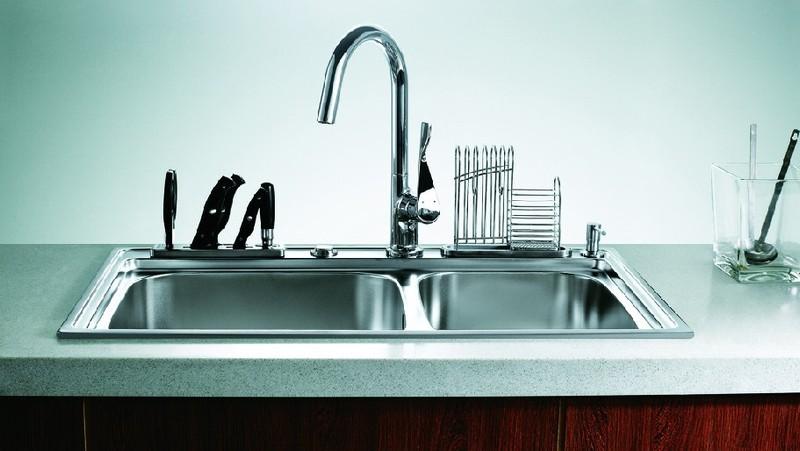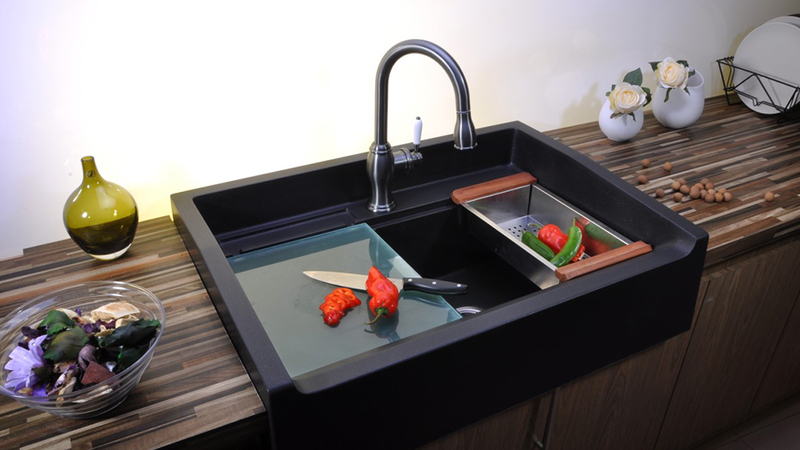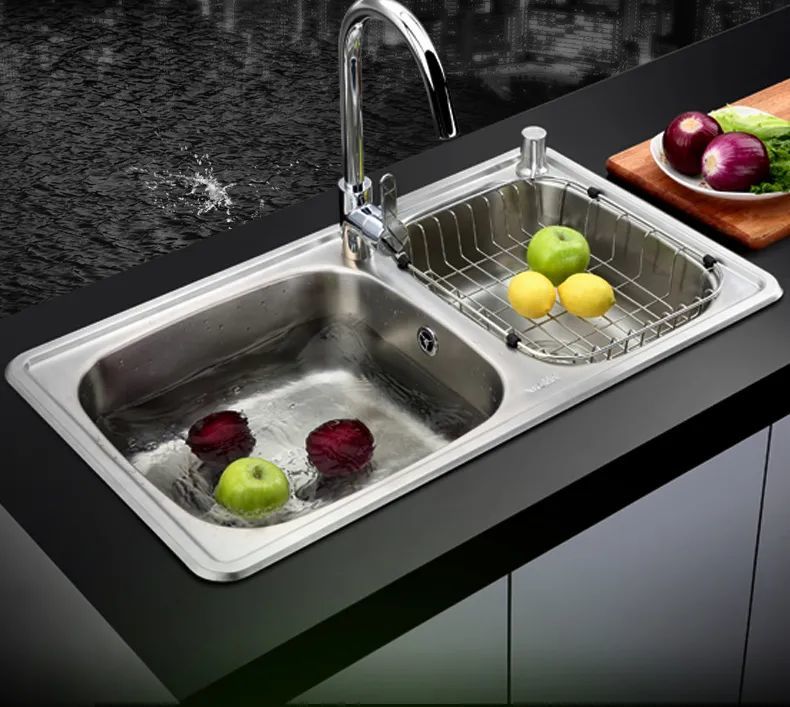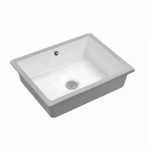Dealing with a malfunctioning kitchen sink can be a hassle, disrupting your daily routine and causing unnecessary stress. From leaky faucets to clogged drains, there are several common issues that homeowners may encounter. Fortunately, many of these problems can be resolved with some basic troubleshooting and DIY repairs. In this comprehensive guide, we’ll discuss various common kitchen sink woes and provide step-by-step solutions to help you tackle them effectively.

1. Leaky Faucet: Fixing Drips and Drops
A leaky faucet is not only annoying but can also lead to water wastage and higher utility bills. The most common cause of a leaky faucet is a worn-out or damaged O-ring, washer, or seal. To fix this issue, start by turning off the water supply to the faucet. Then, disassemble the faucet handle and inspect the O-ring and washer for any signs of wear or damage. Replace any worn-out components with new ones, making sure to lubricate them with plumber’s grease before reassembling the faucet. Finally, turn the water supply back on and test the faucet for leaks.
2. Clogged Drain: Clearing the Blockage
A clogged kitchen sink drain can be a major inconvenience, causing water to back up and potentially leading to unpleasant odors. The most common culprits of clogged drains are food scraps, grease, and soap residue. To clear the blockage, start by removing any visible debris from the drain opening using a pair of gloves or tweezers. Next, try using a plunger to dislodge the clog by creating a strong suction force. If the plunger doesn’t work, you can try using a drain snake or auger to break up and remove the blockage manually. Alternatively, you can pour a mixture of hot water, baking soda, and vinegar down the drain to dissolve grease and debris. Repeat as necessary until the drain flows freely again.

3. Slow Draining Sink: Improving Water Flow
If your kitchen sink is draining slowly, it may indicate a partial blockage in the drain pipe or vent stack. To improve water flow, start by removing the sink stopper and cleaning it thoroughly to remove any buildup of hair, soap scum, or debris. Next, use a plunger to create a strong suction force and dislodge any blockages in the drain pipe. If the problem persists, you may need to inspect the P-trap (the curved pipe beneath the sink) for any clogs or obstructions. Remove the P-trap and clean it out using a wire brush or plumbing snake. Once the P-trap is clear, reassemble it and test the sink to ensure proper drainage.
4. Loose or Wobbly Faucet: Securing the Fixture
A loose or wobbly kitchen faucet can be both annoying and potentially damaging if left unchecked. The most common cause of a loose faucet is worn-out or deteriorated mounting hardware. To tighten the faucet, start by turning off the water supply and placing a towel or cloth over the sink to protect the finish. Next, use a wrench or pliers to tighten the mounting nuts or screws located beneath the sink. If the faucet still wobbles after tightening the mounting hardware, you may need to replace the O-rings or gaskets to ensure a secure fit. Once the faucet is secure, turn the water supply back on and test the fixture for stability.

5. Low Water Pressure: Improving Flow Rate
Low water pressure in the kitchen sink can make everyday tasks like washing dishes and rinsing vegetables feel like a chore. The most common causes of low water pressure are mineral deposits, sediment buildup, or a partially closed shut-off valve. To improve water pressure, start by checking the aerator (the small screen located at the tip of the faucet) for any mineral deposits or debris. Remove the aerator and clean it thoroughly with a mixture of water and vinegar to dissolve any buildup. If cleaning the aerator doesn’t solve the problem, check the shut-off valve located beneath the sink to ensure it is fully open. You may also need to inspect the supply lines for any kinks or obstructions that could be restricting water flow. Once any issues are addressed, test the water pressure to ensure it has improved.
6. Rusty or Corroded Sink: Restoring Appearance
Over time, kitchen sinks can become rusty or corroded due to exposure to water, chemicals, and food particles. Not only does this detract from the appearance of your kitchen, but it can also lead to further damage if left untreated. To restore a rusty or corroded sink, start by cleaning the surface thoroughly with a mild abrasive cleaner or a mixture of baking soda and water. Use a sponge or soft-bristled brush to scrub away any rust or corrosion, paying extra attention to seams and crevices where buildup may be more pronounced. Once the sink is clean, rinse it thoroughly with water and dry it with a clean cloth. For stubborn stains or rust spots, you may need to use a commercial rust remover or a paste made from cream of tartar and hydrogen peroxide. Apply the remover or paste to the affected areas, let it sit for several minutes, then scrub with a brush and rinse thoroughly. Repeat as necessary until the sink is restored to its original appearance.
7. Persistent Odors: Banishing Unpleasant Smells
Persistent odors emanating from your kitchen sink can make the entire room feel uninviting. These odors are often caused by food particles, grease, and bacteria that accumulate in the drain and garbage disposal. To banish unpleasant smells, start by running hot water down the drain for a few minutes to help flush out any trapped debris. Next, pour a mixture of baking soda and vinegar down the drain to neutralize odors and break down organic matter. Let the mixture sit for about 15 minutes, then flush the drain with hot water. You can also try grinding citrus peels in the garbage disposal to freshen it up and leave a pleasant scent. Additionally, consider using a commercial drain cleaner or enzyme-based cleaner to eliminate stubborn odors and prevent future buildup.

8. Damaged Sink Caulk: Sealing Gaps and Cracks
Damaged caulk around the edges of your kitchen sink can lead to water leaks and moisture damage if left unaddressed. Over time, caulk can become cracked, discolored, or moldy due to exposure to water and humidity. To seal gaps and cracks in the caulk, start by removing any old caulk using a caulk removal tool or a putty knife. Clean the area thoroughly with a mixture of water and mild detergent to remove dirt, grease, and mold. Once the area is clean and dry, apply a new bead of silicone caulk along the seam between the sink and countertop, smoothing it out with a caulk tool or your finger for a neat finish. Allow the caulk to dry completely before using the sink. Properly sealed caulk will help prevent water damage and keep your kitchen sink looking clean and well-maintained.

Conclusion
In conclusion, common kitchen sink woes such as leaky faucets, clogged drains, and low water pressure can be frustrating to deal with, but with the right knowledge and tools, many of these issues can be resolved with ease. By following the step-by-step solutions outlined in this guide, you can tackle common kitchen sink repairs effectively and restore your sink to optimal functionality. Remember to always exercise caution when working with plumbing fixtures and consult a professional if you encounter any issues beyond your expertise. With a little effort and know-how, you can keep your kitchen sink in top condition for years to come.


